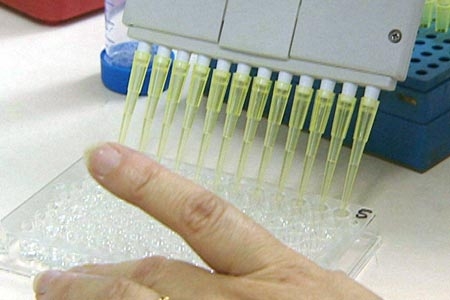
The headline-grabbing $20 billion medical research future fund has been described as both visionary and divisive by the science sector.
Deputy director at the Florey Institute of Neuroscience and Mental Health Steven Petrou said the investment would mean long-term security for existing medical researchers and encourage others to enter the field.
He said it would also improve relationships with international peers, who look for long-term stability before signing on to collaborate on research projects.
Association of Australian Medical Research Institutes president Professor Brendan Crabb described the fund, to be established by 2015, as a game-changer.
Advertisement
”This will be bigger than the dollar value suggests,” he said from Washington DC. ”Other dollars and other partnerships will be fostered by this.”
The fund will be financed by savings made in the health budget and $5 from every $7 collected from patients visiting their GP.
Science Academy president Suzanne Cory expressed reservations at that, as medical researchers were concerned with promoting health – but ultimately funded by people seeing their GP. ”There’s a fundamental contradiction in that,” she said.
A molecular biologist, Professor Cory also raised concerns that the research fund neglected other fields such as physics, chemistry, engineering and mathematics.
Eminent scientist Sir Gustav Nossal agreed, adding that it was distressing to see that other areas of science had taken a hit.
The budget removes at least $420 million over the coming four years from five key science agencies: the CSIRO ($111.4 million), the Australian Research Council ($74.9 million), the Defence Science and Technology Organisation ($120 million), the Australian Nuclear Science and Technology Organisation ($27.6 million) and the Australian Institute of Marine Science ($7.8 million).
In an email to staff on Wednesday, CSIRO chief executive Dr Megan Clark confirmed the organisation would be ”smaller and more focused on the national priorities”. She also said that industry investment in some areas of research such as manufacturing and resources was forecast to fall over the next four years. The organisation receives about 40 per cent of its funding from industry and other research partners.
Science and Technology Australia, an industry body representing 68,000 Australians working in the sector, warned that while the full impact on the agencies weathering funding cuts wasn’t yet clear, it was certain that many hundreds of science and technology jobs had been slashed.
Source: Sydney Morning Herald
